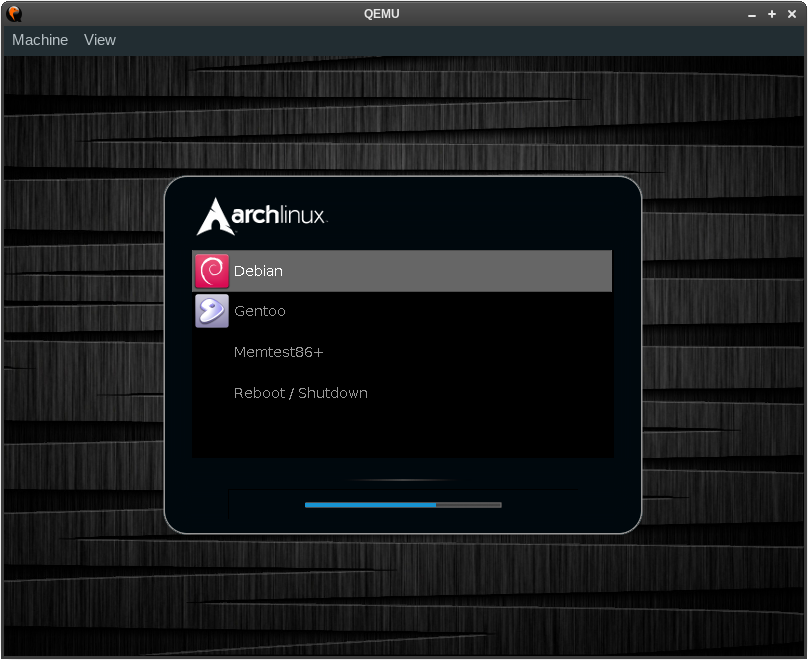About
grub2-theme-preview came into life when I was looking around for available GRUB 2.x themes and wanted a way to quickly see a theme in action without rebooting real hardware.
It takes a theme folder (or just a single picture),
creates a temporary bootable image using grub2-mkrescue and launches
that image in a virtual machine using KVM/QEMU, all without root privileges.
(Showing theme gutsblack-archlinux)
Installation
To install the latest release from PyPI:
# pip install --user grub2-theme-previewTo install from a Git clone for development:
# pip install --user --editable .Please make sure to install these non-PyPI dependencies as well:
grub-mkrescueof GRUB 2 (packagegrub-commonon Debian and Ubuntu)- QEMU — hypervisor that performs hardware virtualization
- OVMF — EFI bios image for use with QEMU
- mtools — collection of utilities to access MS-DOS
xorrisoof libisoburn — frontend which enables creation and expansion of the ISO format
Usage
# grub2-theme-preview --help
usage: grub2-theme-preview [-h] [--grub-cfg PATH] [--verbose]
[--resolution WxH] [--timeout SECONDS]
[--add TARGET=/SOURCE] [--version]
[--grub2-mkrescue COMMAND] [--qemu COMMAND]
[--xorriso COMMAND] [--no-kvm] [--debug]
[--plain-rescue-image]
PATH
positional arguments:
PATH path of theme directory (or PNG/TGA image file) to
preview
optional arguments:
-h, --help show this help message and exit
--grub-cfg PATH path of custom grub.cfg file to use (default:
/boot/grub{2,}/grub.cfg)
--verbose increase verbosity
--resolution WxH set a custom resolution, e.g. 800x600
--timeout SECONDS set GRUB timeout in whole seconds or -1 to disable
(default: 30 seconds)
--add TARGET=/SOURCE make grub2-mkrescue add file(s) from /SOURCE to
/TARGET in the rescue image (can be passed multiple
times)
--version show program's version number and exit
command location arguments:
--grub2-mkrescue COMMAND
grub2-mkrescue command (default: auto-detect)
--qemu COMMAND KVM/QEMU command (default: qemu-system-<machine>)
--xorriso COMMAND xorriso command (default: xorriso)
arguments related to invokation of QEMU/KVM:
--display DISPLAY pass "-display DISPLAY" to QEMU, see "man qemu" for
details (default: use QEMU's default display)
--full-screen pass "-full-screen" to QEMU
--no-kvm do not pass -enable-kvm to QEMU (and hence fall back
to acceleration "tcg" which is significantly slower
than KVM)
--vga CARD pass "-vga CARD" to QEMU, see "man qemu" for details
(default: use QEMU's default VGA card)
debugging arguments:
--debug enable debugging output
--plain-rescue-image use unprocessed GRUB rescue image with no theme
patched in; useful for checking if a plain GRUB rescue
image shows up a GRUB shell, successfully.
